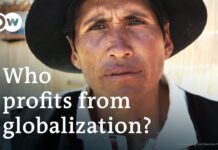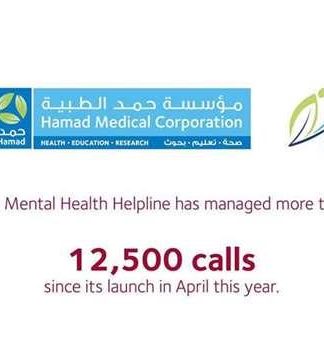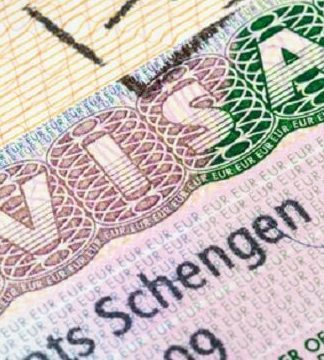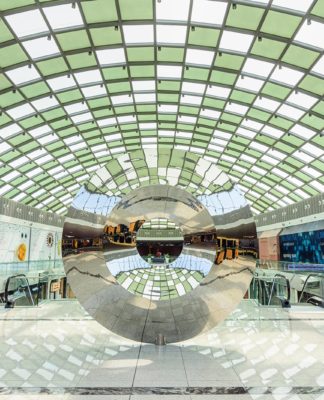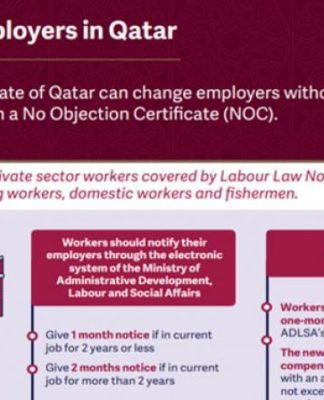Top 10 Richest Countries in the World in 2020
What are the top 10 richest countries in the world? Qatar has consistently come out on top of the list in recent years. For many of us, this question almost automatically brings to mind economic powerhouses such as the United States and China. This may be true if one is to use gross domestic product (GDP) as basis for measuring national wealth. However, size has been found to be of no consequence and national revenue no longer a reliable basis by which to classify whether a country is rich or poor.

What are the top 10 richest countries in the world?
Experts have found that a far more accurate alternative is to look at each nation’s data on GDP per capita based on purchasing power parity. To put it simply, a country’s wealth should be measured by the totality of all goods and services (excluding revenue and investments from overseas), taking into account a country’s population. So in the case of Qatar, which remains as the richest country in the world today, its GDP per capita of $129,360 represents the annual income of the average Qatari.
The International Monetary Fund (IMF) is known for issuing biannual reports on the economic performance of the world’s richest nations based on their GDP per capita. It likewise makes use of PPP capita as an additional basis for its report. Essentially, PPP makes a just comparison of living conditions among different countries by taking into consideration inflation rates and relative cost of living.
Richest Countries In the World in 2018
Gross domestic product (GDP) based on purchasing power parity (PPP) per capita
Qatar
134,623
Macao SAR
122,201
Luxembourg
108,813
Singapore
103,717
Brunei Darussalam
83,777
Ireland
82,439
Norway
76,737
United Arab Emirates
70,474
Kuwait
67,969
Hong Kong SAR
66,517
Source: gfmag.com
Designed by
Whereas before most agencies have used GDPs as the basis for measuring national wealth, this practice has proved notoriously unreliable. If such were to be used, the current global GDP forecast would almost certainly put economic superpowers at the forefront of rich nations. Most economic heavy hitters have high GDPs but are not considered rich countries due to their large populations, hence unimpressive GDP per capita. They likewise do not rely on immigrant workers who are not taken into account when calculating for GDP per capita.
In this article, we will take a look at the top 10 richest countries in the world ranked according to economic data released by the IMF.
Traditional economic powers have ceased to become the wealthiest nations in the world. Although GDPs have been increasing at breakneck speed, the distribution of wealth has yet to undergo radical changes. Here, we list the top 10 richest countries in the world.
10. Hong Kong

This former colony of Great Britain is now a special administrative region of China, which begs the question: is it an independent country? This is apparently the case as the whole world in general treats it as one. It is one of Asia’s financial hubs, ranking no. 4 out of the world’s 190 economies in the Ease of Doing Business index that the World Bank periodically compiles. A popular destination for startups, Hong Kong is open to foreigners owning 100% of their businesses despite the absence of citizenship. It is also home to the largest number of ultra-high net worth ($30 million at the least) people in the world.
9. Kuwait

Ninth in our top 10 richest countries in the world list, this small Arab nation is known for having a petroleum-based economy with petroleum-based products accounting for 95 percent of its exports. It, therefore, does not come as a surprise that Kuwait’s GDP per capita has reached $66,980, spiking by 1.9 percent from the previous year. The country is not only the ninth richest in the world, but is also one of the wealthiest among Gulf Cooperation Council member states, second only to Qatar. But the fact that the country sits on around 10 percent of the world’s petroleum reserves has not kept it from exploring other revenue sources. In fact, it has been seeking to diversify into other potential income sources in preparation for the future.
8. United Arab Emirates

Another Middle Eastern country that relies heavily on petroleum revenues, the United Arab Emirates (UAE) also benefits from income derived from its telecommunications and services sectors. It does not rest on its laurels despite being among the world’s most wealthy nations. It has been diversifying its income sources, betting on industries that have high-yield potential. This move has immensely benefited the national economy, with the tourist trade helping the economy through the 2007-2009 world financial crisis. Sound economic policy has indeed been sustaining the UAE, resulting in a 2.4 percent increase in its GDP per capita, which now stands at $70,262.
7. Norway

A prominent country in Scandinavia, Norway is gifted with both beauty and charm, not to mention a rich economy. In fact, its GDP per capita has expanded by 3.1 percent in 2018, reaching a staggering $74,318. Industrialization has greatly contributed to the country’s economic growth, with activities such as natural resource and petroleum exploration and fishing contributing in bulk to the economy. Known for its impeccable living standards, Norway’s monetary policy is of an independent nature, which has apparently been working to its advantage given its high productivity, state-sponsored healthcare and negligible unemployment rate.
6. Ireland

A land known for weaning great writers and its lovely tourist spots, Ireland has evolved into one of the most affluent nations in the world. It has one of the highest living standards worldwide thanks to its robust economy, which is primarily driven by trade and investment specifically. Ireland’s GDP per capita has increased by 6.1 percent, reaching $77.670. Despite peaking in 2008, Ireland’s economic growth remains the envy of other countries. The entry of foreign investors like Microsoft, Google and Apple has transformed the country into an exporter of medical, electrical and computer equipment. Also contributing to its economic growth are its pharmaceutical and chemical industries, along with natural resources such as fisheries, minerals and timber.
5. Brunei Darussalam

This small Southeast Asian nation is populated by only 400,000 people. But don’t let its size fool you. Brunei Darussalam has consistently made it to the top 10 richest countries in the world in recent years. This year, the country holds the no. 5 spot with a GDP per capita of $81,612, up 3.1 percent from 2017. This robust Southeast Asian economy is heavily dependent on its oil and natural gas production, which supports more than half of its GDP. This is further reinforced with income from its investments overseas and local production. Brunei, however, is starting to diversify its economy by investing in other sectors. The strong economy is reflected in the government’s subsidy of food and housing and provision of free healthcare to its people.
4. Singapore

This cosmopolitan city-state of 5.612 million people is known as the wealthiest nation in Asia and by far, fourth in the whole world with a GDP per capita of $98, 255, a 4.4 percent increase from 2017. Despite its minuscule size, lack of natural resources and agricultural land, it has managed to amass wealth that other countries only dream of. Today, Singapore’s economy continues to grow, driven primarily by foreign investments and trade. The largest economic sectors include banking, shipbuilding and electronics. Dubbed as the most expensive country in the world, Singapore has been living up to its reputation as its economy expanded by 3.9 percent during the second quarter of 2018 alone. Much of this has been attributed to the country’s liberal economic policy and multicultural economy. Although the financial services sector remains as the backbone of the country’s economy, its services and manufacturing industries have consistently contributed to its economic standing.
3. Luxembourg

This small European nation is known for its majestic castles, delectable cuisines and being the last Grand Duchy in the world. But the country more than makes up for its size with its strong economy. Luxembourg ranks third in our list of the top 10 richest countries in the world. The country has posted a GDP per capita of $109, 199, an increase of 3.9 percent from last year. Its diverse natural resources are seen as the main driver of Luxembourg’s economic growth with the steel, industrial and banking segments as its leading revenue generators. It has also been attracting banks from around the globe owing to its low taxes, proof of which is the fact that the country has over 150 banks. Conservative economic policies have also played a role in the country’s economic growth with an economy known for innovation and negligible inflation rates.
2. Macau

This former Portuguese colony has established itself as the second wealthiest nation in the world, posting a 7.4 percent increase in its GDP per capita, which has reached $118.099. Its strong economy is driven primarily by tourism and gambling, earning the title “largest gambling center in the world.” Compared to other gambling economies, Macau has reaped the most benefit from the sector, continuously posting the highest gambling revenue in the world since the year 2006. Visitor arrivals have likewise increased, rising by 8 percent to 16.81 million during the first six months of 2018. Although these income sources have been consistently delivering, moves to develop the administrative and manufacturing sectors are underway.
1. Qatar

Ranking first in our Top 10 richest countries in the world list is oil-rich Qatar. Its robust economy, which has been outperforming the rest of the world, is powered by its well-established petroleum sector, which accounts for around 85 percent of its export and 70 percent of total national revenue. With a population of only around 2.639 million, Qatar enjoys the economic benefits of a small nation blessed with vast oil reserves. The country, in recent years, has enjoyed surplus revenues from the oil sector. Aside from this, the tourist trade has also been contributing to the national coffers, along with its steel and fertilizer exports. But Qatar’s economy is far from perfect, relying on expat labor to keep its economic engine running. The government does not levy any taxes on Qataris, making them enjoy their earnings in full, along with the national health insurance that the government sponsors.
How Does A Country Become Rich or Poor?
As explained earlier, the “richness” or “poorness” of a nation is determined by its GDP per capita. However, this does not mean that people in poor countries are generally poor. In the same manner, poor people exist in wealthy countries. And because poverty is seen as the more pressing issue between the two, studies have been focusing on how to alleviate poverty.
The answer to this question lies not in raising a country’s GDP but rather in increasing the economic output per person. Simply put, economic growth is the key factor in minimizing poverty. To push economic growth, a country needs to increase capital and labor productivity. This is called total factor productivity, which when raised drives economic growth.
TFP, in turn, is influenced by two factors—governance and trade, with one paving the way for the other. Government, which crafts economic policy and access to capitalization, can either boost or negatively influence trade. When properly nurtured, trade serves as an excellent economic driver and vice versa.
So there you have it the top 10 richest countries in the world ranked by GDP per capita. Now the wealth that these nations possess might be a bit overwhelming to some. But bear in mind that there are a lot of factors that influence this list apart from economic performance. Just like in the corporate world, these rankings undergo reshuffling every year. Speaking of which, the richest companies in the world should be worth checking out, allowing you to find out who’s raking in the big bucks in the world of business.










